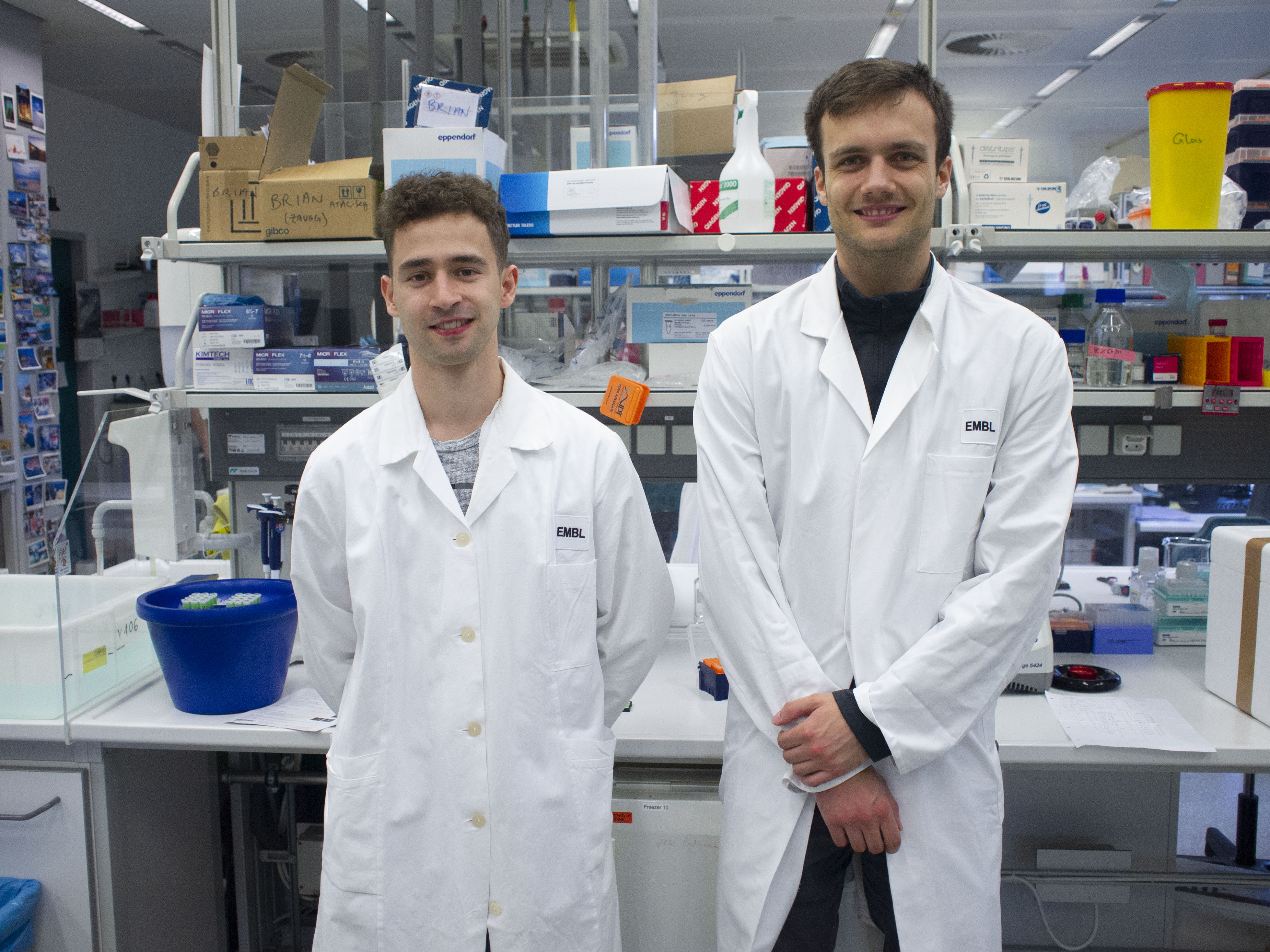
Read the latest Issue
EMBL’s Genomics Core Facility supports students participating in the annual iGEM competition

Jakob Keck and Steffen Lemke, two students from the University of Tübingen, arrive at EMBL early in the morning of 19 September. They start preparing their first samples in the Genomics Core Facility, under the guidance of research technician Ferris Jung. Jakob and Steffen are part of a team participating in iGEM – the International Genetically Engineered Machine competition. Every year, thousands of students from all over the world compete with projects involving synthetic biology. From developing new therapeutic ideas to building robots, any approach is possible and prizes are awarded in various categories. The aim of iGEM is to address real-world problems through responsible innovation in synthetic biology.
The research by the Tübingen students is supported by Vladimir Benes, Head of EMBL’s Genomics Core Facility. “We had a few team members who were very enthusiastic about EMBL and wrote an email,” says Steffen. “Vladimir wrote back and said we could meet to talk about our project.”
Jakob explains that the Tübingen group is looking for a way to treat type 2 diabetes using E. coli Nissle 1917 bacteria. This strain was first sampled from the faeces of a German soldier during World War I. He was the only one among his comrades not to contract diarrhoea while stationed in the Balkans, which led Dr Alfred Nissle to believe that the soldier might be carrying some particularly useful bacteria in his gut. He was right. Since then, E. coli Nissle has been known for its probiotic qualities and lack of pathogenic effects, and is used to treat several intestinal diseases.
The Tübingen group wants to genetically modify E. coli Nissle to produce incretins, a group of hormones that lower blood sugar level by stimulating the release of insulin. “A genetically modified strain of E. coli Nissle could settle in the gut and then react to the presence of sugar and release incretins, which can then penetrate the walls of the intestine, get into the bloodstream, and reach the pancreas. This could be used as a therapy for type 2 diabetes,” says Jakob.
In a parallel project, the group wants to develop a genetic modification that leads to destruction of the bacteria after exposure to environmental stimuli outside the patient’s body. This ensures that bacteria with engineered DNA can’t spread.
EMBL is providing the group with RNA sequencing expertise so that they can analyse 24 samples. This method allows them to observe levels of gene expression in an organism, providing information on its genetic responses to specific conditions.
“We want to find out how E. coli Nissle behaves in the gut,” says Jakob. “How is it affected by our metabolism? How does it react to different PH values? How does our strain interact with other bacteria in the gut microbiome? If you would want to administer it in dry form in a pill, how does it react to drought stress? Those are things our team will analyse with the data we get through RNA sequencing.”

Steffen adds that Vladimir also supported the group by discussing their project and giving them food for thought. It was particularly important to Vladimir that the students understood their own project well enough to explain it clearly and justify the methods they wanted to apply.
“I feel that EMBL should encourage young aspiring talents and nurture their enthusiasm for science, provided that their projects are well thought through. They can even be a bit adventurous, but they need to have solid reasoning. I’ve definitely found that in the project of these students,” says Vladimir.
EMBL’s support is especially important for the group because their entire project is self-organised. “iGEM is not a pure lab project,” says Jakob. “A lot of work goes into defining your project and raising funds, because all the money and materials have to be obtained by the student team. So you spend a lot of time writing to sponsors and working on outreach. EMBL’s support is a great opportunity for us, because it’s rarely possible to do RNA sequencing within the framework of an iGEM contest.”
After creating a wiki describing their project, the teams will gather in Boston, US, in early November to participate in the five-day iGEM Giant Jamboree. Groups will present their project in front of thousands of people, and will compete for prizes in various categories. “The idea of iGEM is to prove a principle,” Steffen adds. “It’s not about developing a finished product for patients, but about generating new ideas and experimenting freely.”
Looking for past print editions of EMBLetc.? Browse our archive, going back 20 years.
EMBLetc. archive